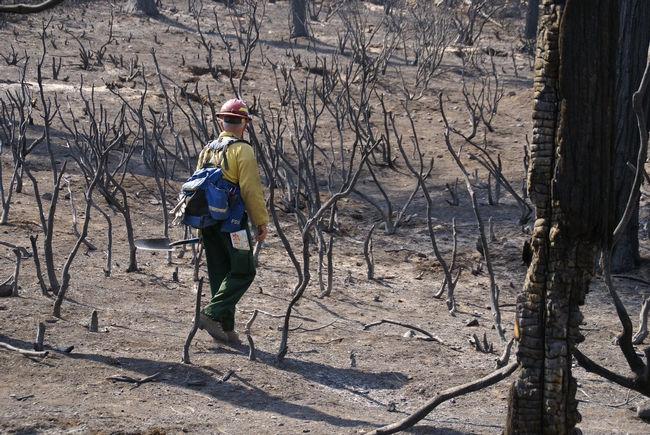Healthy California wildlands were managed with periodic wild and cultural fires for millennia. As the state's population and development grew, officials suppressed most fires out of concern for people, homes and businesses.
Though well-meaning, the strategy left land overgrown with vegetation capable of fueling even more dangerous high-intensity wildfires. The past few years have seen an exponential increase in catastrophic wildfires in California.
As a result, there is growing interest in using prescribed fire to bring nature back into balance. Despite the current interest, communities have limited capacity, shared knowledge and experience to bring it back. To close those information gaps, UC Cooperative Extension in Mariposa County hosted a five-session webinar series because the in-person workshop was cancelled due to the coronavirus pandemic. The switch to a virtual series enticed more than 500 people from across the U.S. and more than 12 countries register for the series, and 200 people regularly attended each session. In comparison, 34 people were registered for the in-person workshop.
The webinar series provided guidance on fire ecology, prescribed burn permitting and planning, plus cost-share and the concept of launching a prescribed burn association with neighbors, local agencies and the community in five 90-minute sessions. Recordings are now available free on the UCCE Mariposa County YouTube channel.
The training is designed for California landowners and land managers, but contains information that can be applied broadly in areas where landowners and managers are faced with unmanaged vegetation growth that poses a fire risk.
“Whether you live in a mixed conifer forest, oak woodland, chaparral or grassland habitat, returning prescribed fire to California is part of well-managed landscapes,” said Fadzayi Mashiri, UC Cooperative Extension livestock and natural resources advisor and the webinar series coordinator.
The webinar series struck another first for the small foothill county. The recorded series was approved for continuing education units by the national Society for Range Management. Following are links to individual sessions:
Session 1 – Fire ecology
Fire ecology and behavior and benefits of prescribed fire, Susie Kocher, UCCE forestry advisor in Lake Tahoe
Prescribed fire for invasive plants and weed control, Fadzayi Mashiri, UCCE natural resources advisor in Mariposa and Merced counties
Session 2 – Permitting
CAL FIRE permitting and prescribed burning, Brian Mattos, CAL FIRE unit forester for resource management
Air quality permitting and the health impacts of fire – David Conway, environmental health director, Mariposa County Health Department
Session 3 – Prescribed fire planning
Wildland-urban interface dynamics and community planning – Steve Engfer, senior planner, Mariposa County Planning Department
Developing a burn plan – Rob York, UCCE forestry specialist
Session 4 – Resources for burning
Prescribed burn associations – Lenya Quinn-Davidson, UCCE fire ecology advisor
EQUIP funds for prescribed fire through the National Resources Conservation Service – Robyn Smith, Natural Resources Conservation Service district conservationist
Session 5 – Cultural burning
Benefits of cultural burn, Honorable Ron Goode, North Fork Mono Tribe
Social History of Fire in Southern Sierra – Jared Dahl Aldern, Sierra-Sequoia Burn Association.
The workshops were funded in part by California Climate Investments, a statewide initiative that puts cap-and-trade dollars to work reducing greenhouse gas emissions, strengthening the economy and improving public health and the environment. Sponsors include the North Fork Mono Tribe, CAL FIRE and the Southern Sierra Prescribed Fire Council.
